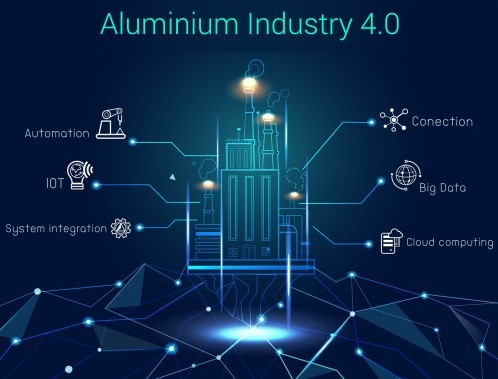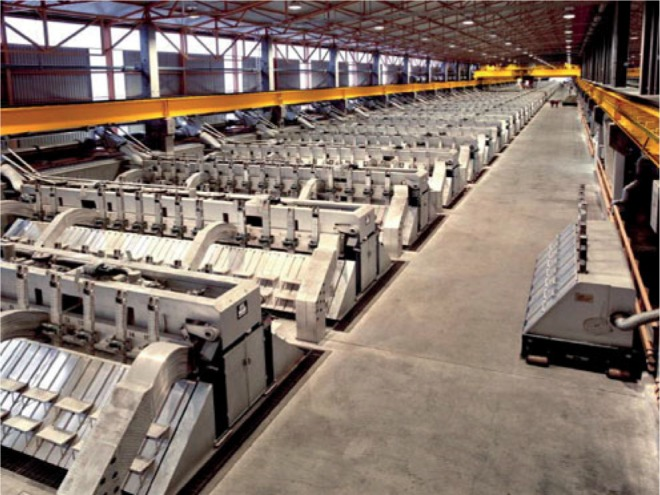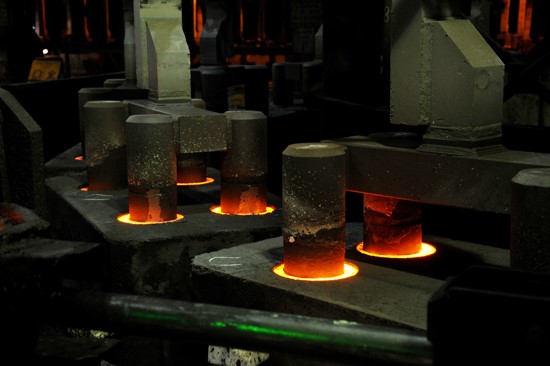

Digitalization and automation are not new to any industry. It started with the adoption and proliferation of digital computers and digital record keeping in the 70s and became prevalent in late 1990s and 2000s. This led to computerization of all processes and implementation of digital activities in various organizations and industries, which is called the Third Industrial Revolution. Now the world is moving towards Industry 4.0 or the Fourth Industrial Revolution. The term "industry 4.0" or the "fourth industrial revolution is coined to describe the increasing digitalization in an industrial environment. It covers current systems and technologies for automation, artificial intelligence and data exchange. It loosely refers to the concept of factories in which machines are augmented with wireless connectivity, sensors, and artificial intelligence and connected to a system that is able to make decisions on its own and operate smartly. A combination of digital and automation systems, the Internet of Things and real time data has made Industry 4.0 and the smart factory a reality.

We are here talking about the implementation of Industry 4.0 framework in the metal sector and more precisely, in the aluminium industry. Though digitalization has become an integral part of factories of today, the changes brought about by digitalization in the field of metals production are not palpable as such.
Digitalization is the basic framework of Industry 4.0, which goes much beyond it to include interconnectivity, automation & robotics, machine learning, real-time data, IoT (Internet of Things) and IIoT (Industrial Internet of Things) or smart manufacturing. Augmented Reality is another element of Industry 4.0 which in its infant stage and is expected to take the industrial sector to another level in future. There are a few leading technology players that have actually initiated digitalization in the aluminium industry by bringing in path breaking technologies. The aluminium sector has already implemented some elements of the framework and moving slowly towards creating plants of the future.
Why Industry 4.0 in aluminium?
Metal Industries including the aluminium industry are the fundamental indicators of growth/ decline for any country. So, an outdated metal sector cannot give enough support to a growing economy. Disruptive Forces in the aluminium industry are making it imperative for companies to reinvent themselves to cater to the changing socio-economic norms. Advancement in digital technology is disrupting the traditional business models and redefining the way business is to be done in order to compete and survive in future.
Currently, global aluminium producers are facing challenges from a volatile economy, environmental concerns, and stricter safety and carbon regulations. The industry is facing flaks because of its energy intensive nature. While the external forces cannot be controlled by the industry, the key to improve the efficiency and productivity of a smelter lies in intelligent use of the data and information available within the smelter. This can improve cost, quality and customer satisfaction while offering better protection against the external factors. By introducing digital technologies and other Industry 4.0 elements in a plant, a producer can record significant jump in productivity while offering a better control over the production process and customer reach out. This will at the same time provide better safety and environmental sustainability. Leveraging on digital technology and its allied technologies is the only way for the producers to remain competitive in the future world of digital manufacturing.
Elements of Industry 4.0 in aluminium industry

Though the industry is buzzing with discussions on digitalization processes and terms like Industry 4.0, Advanced process control, Big data etc., these terms do not always have clear-cut definition and differentiation in a broader industrial value chain like aluminium which covers alumina refining to aluminium smelting and various downstream processes and recycling. The meaning of digitalization and automation get interchanged within such an environment.
The key Industry 4.0 elements being deployed in the aluminium sector are:
With digitalization the entire production process in an aluminium plant is centered around a computer system so that the process can be monitored, analysed and optimized effectively. It includes both hardware and software systems to draw data from process and assets in order to facilitate smooth running of operations, maintenance, and better error-diagnosis and to optimise performance.
Many critical operations in an aluminium smelter, which were once operated manually in a high risk, high temperature zone are now automated using Automation & Robotics technology and can be performed without human intervention. A few such operations are pouring of hot metal in the furnace in the cast house, and process measurements in pots and furnaces, which not only offer safety but, can provide better temperature maintenance, work speed and casting quality. Robotics is also used in constructing ingots bundles. Automated Guided Vehicles (AGV) are now a part and parcel of potrooms and casthouses.
"Big data" is a field, which teaches how to extract and analyse information from large and complex data sets. It also includes search, sharing, transfer, visualization, updating, information privacy and data source. It uses predictive analytics, user behaviour analytics, or certain other advanced data analytics methods on real-time data derived from the aluminium plant. Digital Image analysis helps in better control of pot operations. These are then being used in process management and in customer and supplier management.
Machine Learning and Artificial Intelligence are two interconnected concepts. Machine learning lets machines access data and learn for themselves to operate independently. AI is a larger concept that allows a computer programme act smartly like a human brain. AI is at an infant stage while machine learning is being utilized in aluminium smelting process. Machine learning can understand noise pattern in a reduction pot to control energy consumption. It can also estimate the alumina concentration in a cell and identify anode effects proactively.

The internet of things (IoT) is a computing concept that connects everyday physical objects to the internet and lets them identify themselves to other devices. The industrial internet of things (IIoT) is the use of smart sensors and actuators to enhance manufacturing and industrial processes. Both are being used in the aluminium sector.
Digital tools have transformed the way buying and selling take place. Networking with customers and/or external partners is getting more and more important in the aluminium industry. Various digital channels facilitate better integration of customers and suppliers network and the entire supply chain. They also help in maintaining better customer relations and retaining customers.
IIoT is used in aluminium plants to monitor, collect, exchange and analyse data from the machines to enhance manufacturing and industrial processes.
However, most of these applications are overlapping with each other in the aluminium manufacturing process and they are in a chain of development happening within the broader spectrum of digitalization.
Implementation Levels in Aluminium Sector
A survey of 240 aluminium experts from 39 countries conducted on the occasion of the ALUMINIUM World Trade Fair 2018 gives us some interesting data on Industry 4.0 implementation in the aluminium industry.
While 28 per cent of the industry players are still gathering information on digitalization, about 28% are currently in the process of developing a digital strategy. About 11 per cent of respondents are already deploying Industry 4.0 projects in their plants.
The study shows Industry 4.0 applications are primarily deployed in production (27%) and R&D (22%), followed by distribution (15%), logistics (13%) and the supply chain (12%). Industry 4.0 technologies are applied in production control, the networking of machines (“Internet of Things) and production processes (13%). At the same time, companies are also focussed on linking up with partners (11%) and on mobile devices (11%) and cloud computing (9%).
Conclusion
When it comes to the implementation of "Industry 4.0 technologies in the aluminium industry; even seasoned plant operators are not completely aware of the full potential of such technologies, despite agreeing that the optimum implementation of these will be the future of the aluminium industry. About 62% of large scale aluminium producers are investing in Industry 4.0 applications and R&D in order to improve and sustain customer delight, quality, time and cost and optimising the value chain. They are also using digital technologies for enhanced collaboration within the supply chain.
It is imperative for aluminium producers to reassess their production process and strategize their operations in the line of complete digital engagements, as digital manufacturing is the thing of the future. As the supplier of a key raw material to some of strategic sectors in the world economy, the aluminium industry cannot afford to lag behind in this transformation. The process has started and it is sure to turn around the industry in near future.
Responses








